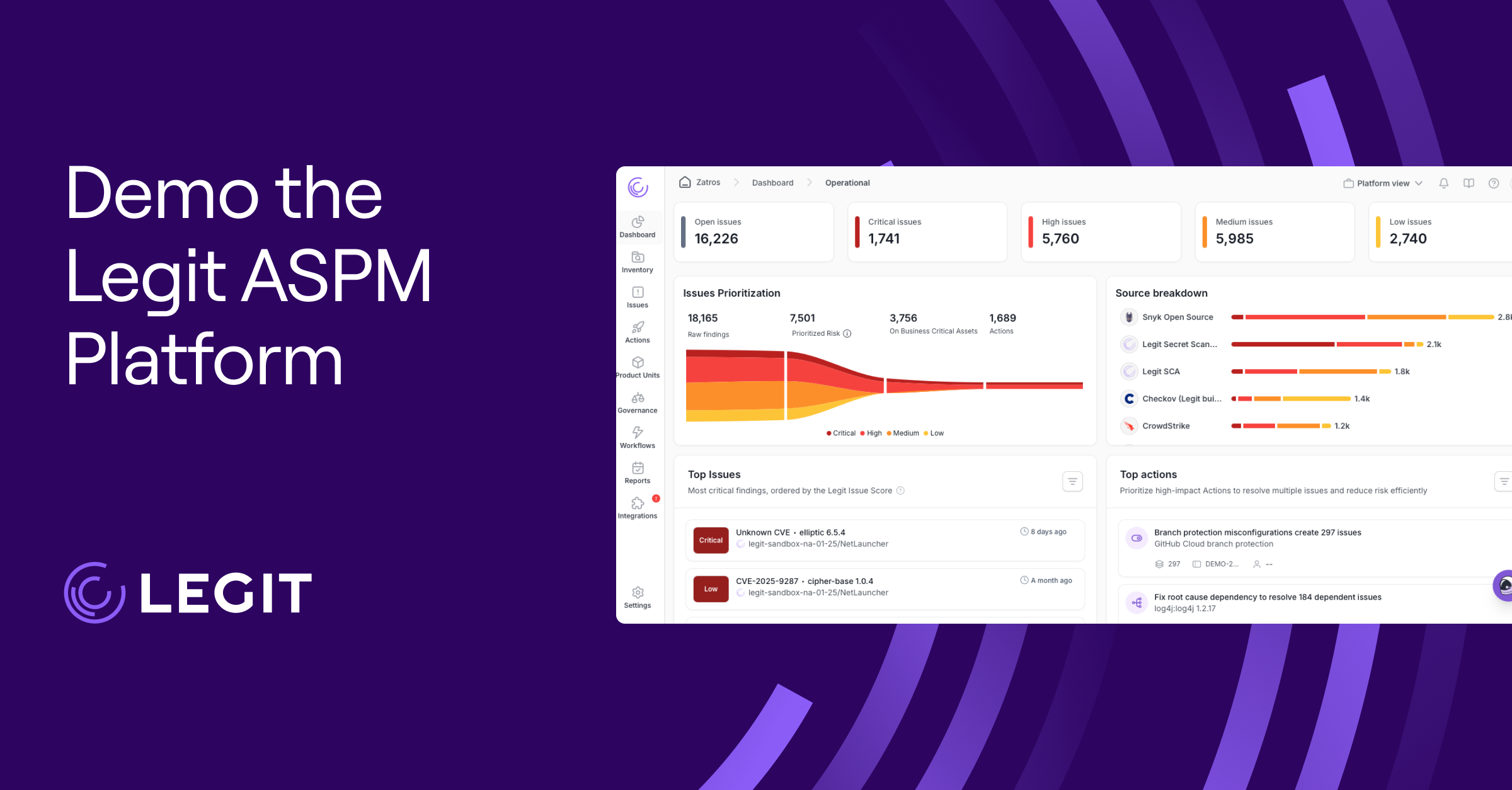Machine learning (ML) introduced capabilities that changed the way many companies operate and generate new potential income streams. However, the widespread adoption has also made ML systems a constant target for cybercriminals, who use techniques like model tampering and supply chain attacks to exploit vulnerabilities and steal data.
Threats like these created a need for machine learning security operations (MLSecOps). But what is MLSecOps, and how can it benefit your organization? In this article, we’ll answer that question and explain how your business can implement this security framework.
What Is MLSecOps?
MLSecOps is a set of practices, controls, and tooling that secures the entire ML lifecycle. ML allows machines and software to execute tasks—such as data collection, labeling, validation, deployment, and ongoing monitoring—without receiving explicit commands. With MLSecOps, you can enhance security while training and using ML tools.
Where application security focuses on code and runtime, MLSecOps adds domain-specific instructions to protect AI systems by addressing their unique needs and risks. This involves building security into every step of the ML workflow by:
- Hardening data and ML pipelines
- Verifying model provenance and lineage
- Tracking changes in AI bills of materials
- Governing model usage
- Enforcing safety policies for AI agents and assistants
- Continuously monitoring for model drift
The end goal is to create and maintain secure AI/ML outcomes without slowing down development and delivery.
What Does MLSecOps Cover?
Machine learning security operations can include a wide range of issues and tasks. Some of these may overlap with other operations, like DevOps and DevSecOps. However, MLSecOps coverage areas are fine-tuned for the unique environments of AI and ML models.
Supply Chain Protection
MLSecOps aims to prevent hackers and cybercriminals from targeting potential vulnerabilities in ML or software supply chains, such as:
- Package managers
- Pre-trained weights
- Public datasets
- Personal user data
- Open-source notebooks
- CI/CD for AI models
The specific types of cybersecurity measures you use will depend on what stage of the supply chain or lifecycle you’re targeting. Typically, MLSecOps teams place controls around both input and output behaviors or qualities.
Model Provenance and Lineage
“Explainability” is the capacity to audit and reverse-engineer AI model outputs, in order to understand how the AI came to a specific decision and why. It’s important to account for explainability when building and deploying systems, so you can detect and prevent biases and other unfavorable behaviors.
Model provenance and lineage accomplish this by providing a full historical record of who trained the model, the data the model ingested, the source of that data, and the specified parameters. MLSecOps enforces a cryptographic signing of these and other artifacts, so developers and auditors can trace issues and roll back to previous iterations if necessary.
Risk and Compliance
AI is powerful, but there are plenty of risks to using this technology. Guide rails and transparency measures are essential for safe AI cybersecurity.
MLSecOps addresses some of the potential issues by initializing controls for data privacy and processing, consent, dataset retention, and explainability. It also standardizes risk assessments and model cards to streamline AI auditing and alignment.
Data Quality and Integrity
Bad data leads to bad models, which in turn lead to poor-quality or even harmful outputs. For example, models with limited information about specific demographics may discriminate against them. Incorrect information can also cause harm to the model itself, which may happen through simple human error or intentional data poisoning.
MLSecOps introduces controls that reduce these risks, although it doesn’t eliminate them entirely. Common mitigation steps include data contracts, schema validation, and tamper-evident storage. MLSecOps also defines automated playbooks for responding to data contamination and model drift.
What Is the Difference Between DevOps and MLSecOps?
While a DevOps approach optimizes collaboration to speed up development and delivery, MLSecOps builds security into each level of the supply chain. The latter also focuses on specific protections for ML pipelines.
Teams will still use DevOps practices to build models, but MLSecOps secures those models against internal and external threats. Some additional controls introduced by MLSecOps include red-teaming, model validation, AI data governance, and post-deployment threat protection.
What Is the Difference Between DevSecOps and MLSecOps?
DevSecOps secures the software development process, while MLSecOps secures the process of building and deploying AI models. DevSecOps brings cybersecurity into software delivery through pipelines, repos, infrastructure, and code. MLSecOps extends that security into data, models, and other AI/ML artifacts.
There’s plenty of overlap between these two frameworks, especially when it comes to version control and infrastructure as code. However, MLSecOps adds elements like:
- Model-specific and data-specific threat modeling (e.g., protection against poisoning the dataset used to train a model)
- Built-in dataset governance and lineage protocols
- AI agent/assistant controls
Key Benefits of Adopting an MLSecOps Model
AI security is a pressing issue—concerns abound about misuse and manipulation, along with the broader impact of this technology on individuals and society. MLSecOps presents an opportunity to address both types of risks through:
- Simpler regulatory compliance: More jurisdictions are developing robust AI safety regulations, such as the EU AI Act in Europe. Companies following MLSecOps practices can get a head start on compliance with this and future regulations.
- Secured pipelines: MLSecOps makes cybersecurity an important foundation in AI/ML systems. Addressing security from the start rather than after deployment leads to safer models and fewer opportunities for misuse.
- Improved reliability and user trust: On the whole, Americans are more concerned than optimistic about AI, and that distrust has worsened in recent years. Using MLSecOps to build safer AI may help rebuild that trust.
- Smoother scalability: Standardizing controls makes it easier to safely scale from one limited model to dozens of add-ons or widespread implementation. This is critical as businesses grow and find new applications for AI.
Best Practices for Implementing MLSecOps
To gain the above benefits, you’ll need to follow certain best practices for MLSecOps implementation and use. While not an exhaustive list, these are some good starting points:
- Maintain high-quality data: Cybersecurity controls, such as validating schemas and defining data contracts, are important. However, AI models must also follow proper data collection techniques to ensure adequate representation and accuracy.
- Encourage collaboration: Building in silos tends to increase the risk of security gaps and duplicated efforts. Collaboration between IT, security, and ML teams is vital, as it provides diversity of ideas and experiences without wasting resources.
- Implement continuous monitoring and retraining: AI models can start to drift from alignment as they encounter new information, and they often need additional training. You’ll need to include controls for continuous monitoring and re-alignment to keep the models accurate and secure.
- Test models before and after launch: It’s essential to stress test AI/ML systems in all instances: from pilot to staging to production environments. You’ll want to test for potential vulnerabilities to prompt injection, jailbreaks, evasion, and unauthorized data exfiltration, so you can identify and seal security gaps before hackers find them.
Complement MLSecOps Practices With Legit Security
Legit Security gives you full visibility into your supply chain and the entire software development lifecycle by providing a security platform for AI-led environments. It leverages machine learning in security to protect your tools and pipelines, so your team can build and implement AI with confidence. Legit also assists with AI discovery, code security, and AppSec compliance—all of which are vital for protecting against modern threats.
Request a demo today to see Legit in action.
Download our new whitepaper.


